Whole House Fan: Keep or Remove?
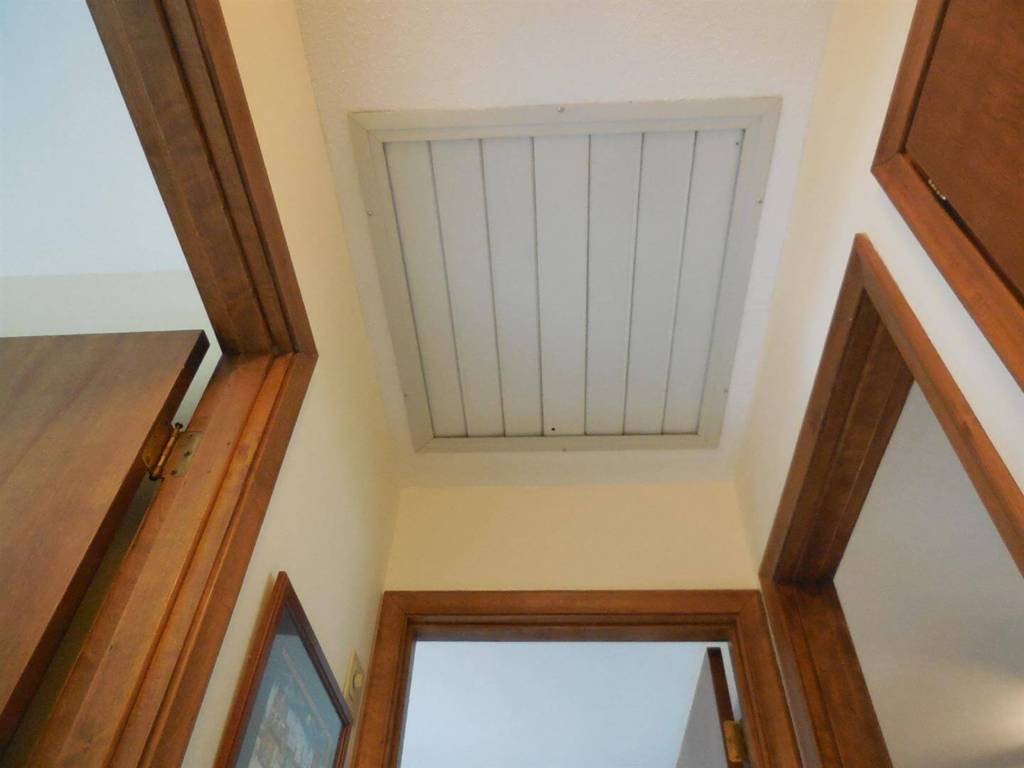
Whole house fans have been around for years, and they’ve started to get more attention from homeowners.
Here’s the question we hear all the time: “Should I keep or remove my whole house fan?”
In this article, we’ll break it down for homeowners in the Detroit Metro area. You’ll find general considerations and actionable advice for what to do with your whole house fan.
Since 2009, we’ve completed more than 6,000 home energy audits and 3,000 projects here in Michigan. If you have questions about what to do with your whole house fan, please don’t hesitate to give us a call or send us a message: (248) 291-7815.
What is a whole house fan?
A whole house fan is usually installed in the ceiling and helps cool your home by drawing in cooler outside air through open windows. It then exhausts the hot indoor air into the attic and out through the roof.
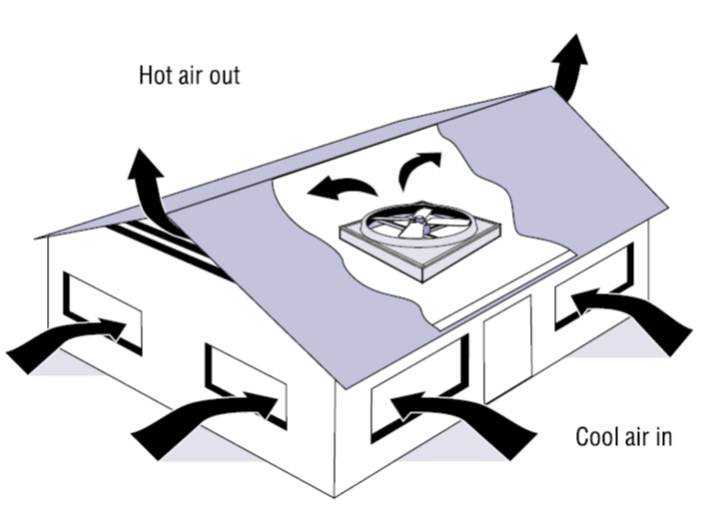
By running the fan at the right time, it can cool your home, and the increased airflow can make you feel more comfortable even before the house itself cools down.
Modern Whole House Fans
Whole house fans have been cooling homes since the early 1900s, becoming really popular in the 1950s and 60s. They were a hit because they were simple and energy-efficient, perfect for areas with cool nights.
But then, in the 1970s, central AC systems came along and stole the show. With the convenience of cooling at the push of a button, and prices dropping, more and more people switched to central air.
Fast forward to today.
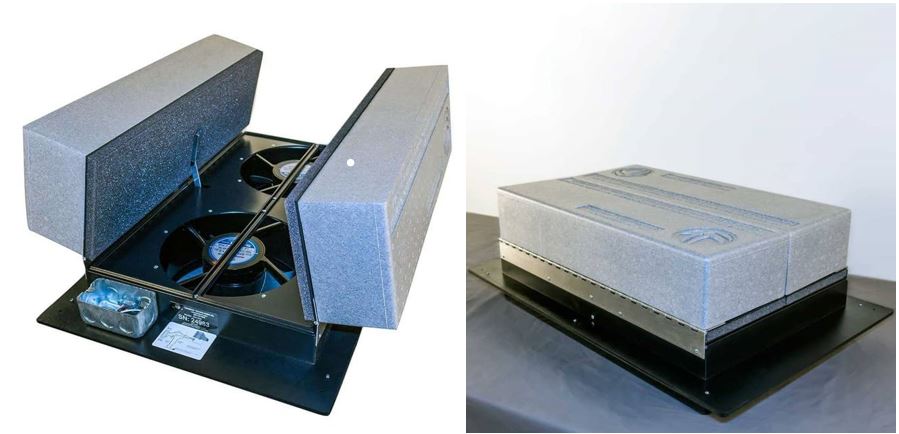
Modern whole house fans are quieter and better insulated, but they’re still not as common. Today, it’s hard for whole house fans to compete with heat pumps and ductless heat pumps, which operate more efficiently and deliver better cooling than either whole house fans or traditional AC systems.
What are the advantages of a whole house fan?
Whole house fans can still offer some benefits for homeowners in SE Michigan, especially with the right use. Here’s a quick rundown:
Energy Efficiency: Whole house fans use significantly less energy than central air conditioning. According to the U.S. Department of Energy, they can reduce cooling costs by up to 90%.
Quick Cooling: They can quickly cool down your home by pulling in cooler outside air and pushing out the warm indoor air. This is the ticket during the cooler parts of the evening or early morning.
Improved Ventilation: Whole house fans provide excellent ventilation, helping to reduce indoor air pollutants, which are generally much more concentrated than pollutants in the outdoor air.
Lower Operating Costs: Because they use less energy, whole house fans have lower operating costs compared to central AC systems. This can be a significant saving over the summer months.
Where does it make sense to use a whole house fan?
Whole house fans are most effective in dry climates with a big drop in nighttime temperatures (source).
If you live in a place where the nighttime lows are below about 67°F during the cooling season and you have a day-to-night temperature swing of 25°F or more, a whole house fan makes a lot of sense.
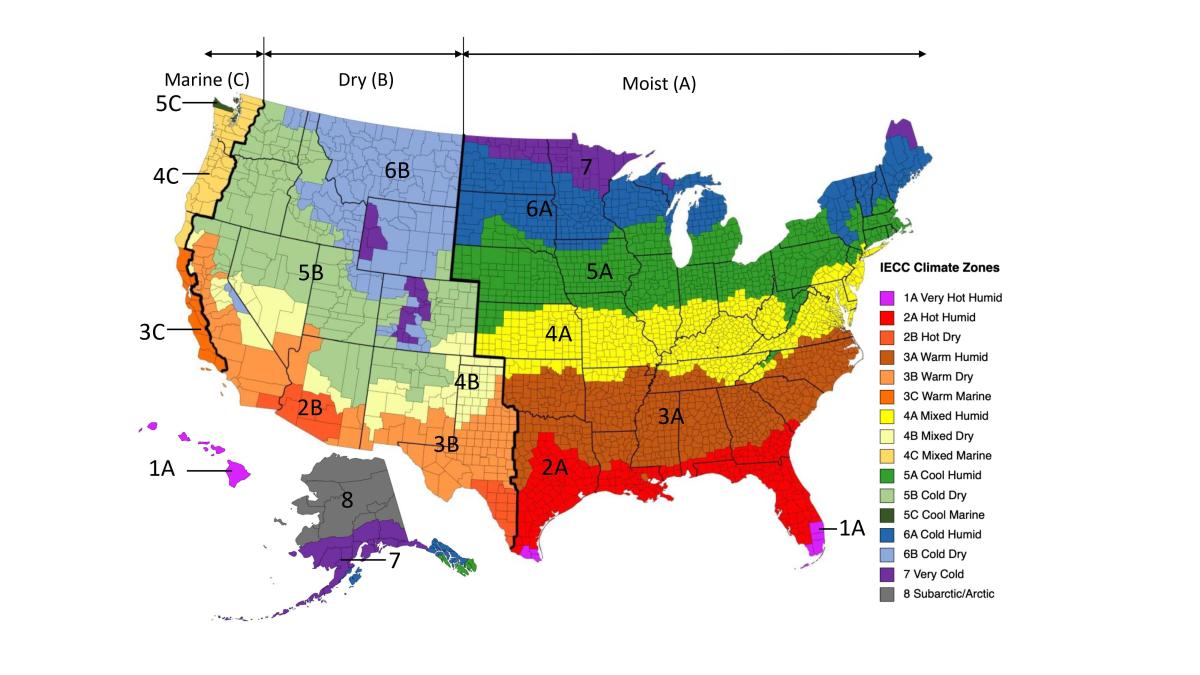
BUT, in humid climates like we have in SE Michigan, whole house fans generally don’t make as much sense.
The humidity can make it uncomfortable even when the temperature drops at night, and running a whole house fan can introduce moisture into your home, which leads to the buildup of mold, mildew, and other things that can make your family sick.
In humid areas, it’s better to use the fan only when the outside air is both cooler and less humid than the inside air.
Switching back and forth between a whole house fan and air conditioning can actually increase your AC's workload because the fan can bring in humid air that the AC then has to remove.
What are the disadvantages of a whole house fan?
Here are some key disadvantages of whole house fans, especially for homeowners in Michigan:
Humidity Issues: In humid climates like Michigan, whole house fans can draw in moisture along with the cooler air. This can make your home feel damp and uncomfortable, and it can also lead to mold growth and other moisture-related problems.
Winter Air Leakage: Whole house fans can hurt you more in the winter than they help you in the summer. Older models especially can be a big source of air leakage in the attic, causing your heating bills to skyrocket as warm air escapes and cold air seeps in.
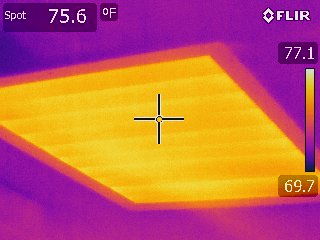
Backdrafting Risks: Whole house fans can cause gas appliances like water heaters to backdraft. This happens when the fan creates a negative pressure that pulls combustion gasses back into your home instead of venting them outside.
According to the U.S. Department of Energy, backdrafting can introduce dangerous carbon monoxide into your living spaces, which is a serious health risk.
Need for Open Windows: To work effectively, whole house fans need open windows. Forgetting to open windows can cause pressure imbalances and reduce the fan's efficiency. Plus, leaving windows open can be a security concern and let in pollen, dust, and other allergens.
Noise and Aesthetics: Older whole house fans can be noisy and unsightly. The constant hum can be annoying - it’s one of the chief complaints we hear. Also, the fans themselves can be an eyesore and might not fit with your home's aesthetic.
Should I keep my whole house fan?
Here's the truth - Every home is different, and there are lots of factors that make it difficult to say definitively, “Yes, you should keep your whole house fan,” or “No, get rid of it right now.”
The the first step is to get a home energy audit, which will help to clarify the best option for your home. here are four options that tend to work well for homeowners in the Metro Detroit area.
#1. Remove the fan and drywall over the opening in your ceiling
Removing the whole house fan and drywalling the hole is the most energy-efficient option. Patching the drywall allows for the best air sealing and insulating in the attic space. It also allows for your home's heating and cooling system to effectively and efficiently heat and cool your home.
#2. Replace the fan with a new high-efficiency whole house fan
We understand that some people prefer to use their whole house fan. It’s an option worth considering if you don’t have an air conditioner and don’t have the budget to install either central air or a heat pump.
In contrast to the older model fans, the new high-efficiency fans come with a built-in insulation cover and airtight seal.
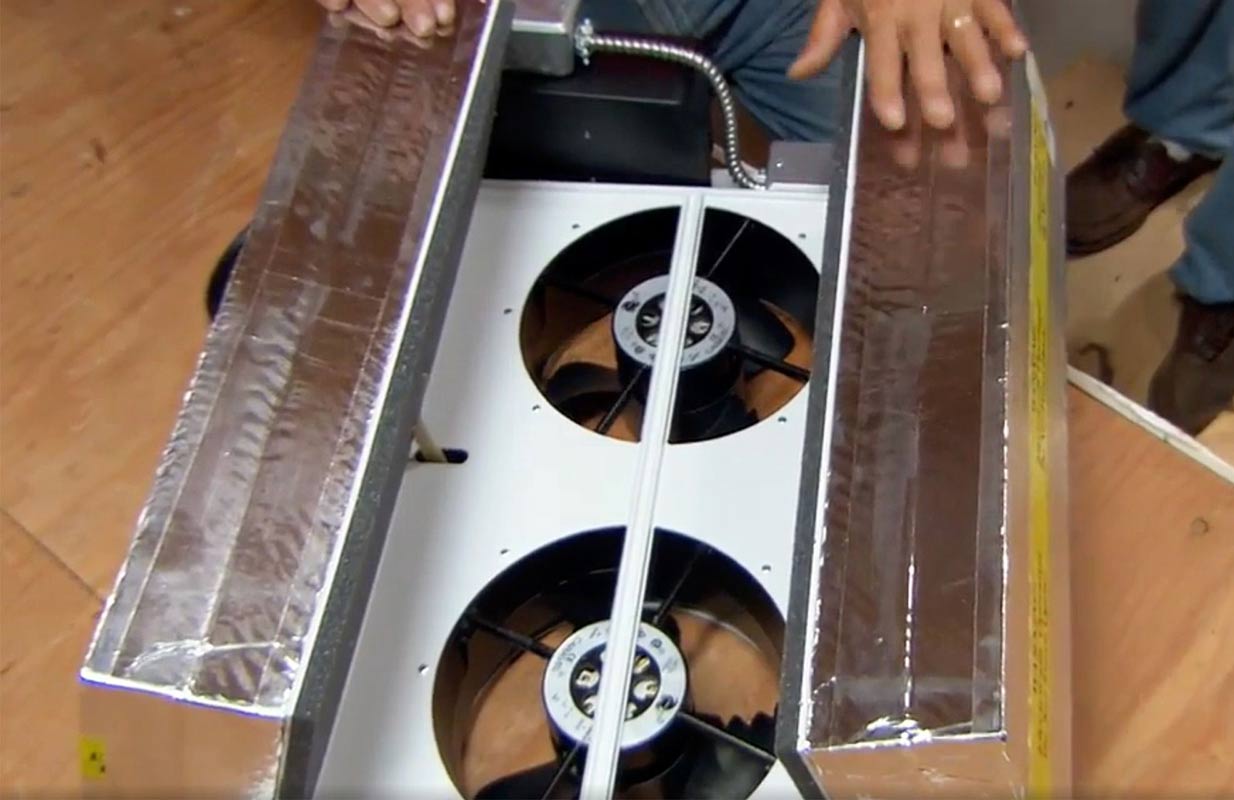
#3. Install an insulated and airtight cover over the existing fan
If you would prefer to not remove the whole house fan or replace it with an efficient fan, we recommend an insulated and airtight cover over the existing fan.
The cover will prevent some, but not all of the air from entering or exiting the home through the whole house fan. You’ll have to remove the cover to operate the fan and then re-install the cover after each use. Not ideal, but it’s better than allowing for the uncontrolled movement of air through your attic.
#4. Replace your fan with a heat pump
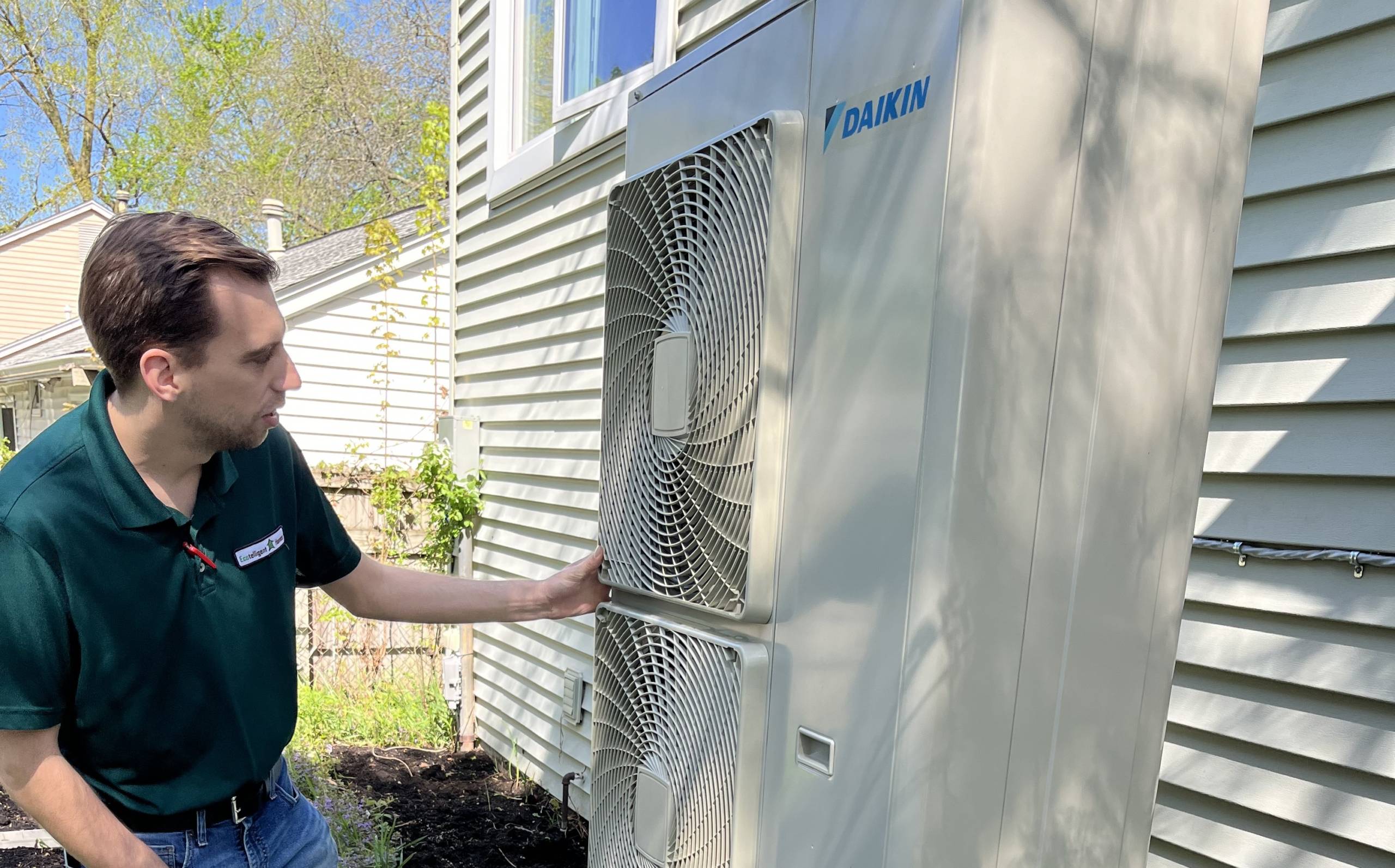
The combination of cash incentives, tax credits, energy savings make heat pumps a strong choice for homeowners in Michigan. Here are a few reasons that a heat pump is often the best option:
Humidity Control: Heat pumps are excellent at managing humidity. In a humid climate like Michigan, this is a big deal. They not only cool the air but also dehumidify it, making your home more comfortable and reducing the risk of mold and mildew.
Consistent Comfort: Heat pumps have both heating and cooling modes, which is how you get consistent indoor temperatures without the need to constantly open and close windows. You can enjoy a steady, comfortable environment any time of year.
Quiet Operation: Modern heat pumps are designed to be quiet. They run smoothly without the loud hum you get from older whole house fans, ensuring a peaceful home environment.
Modern Convenience: With programmable thermostats and smart home compatibility, heat pumps offer a level of convenience and control that whole house fans can’t match. You can adjust your home’s climate from your smartphone, ensuring comfort when you arrive home.
Conclusion: Keep or remove whole house fan
At Ecotelligent Homes, we often suggest removing the whole house fan and drywalling the hole since it’s the most energy-efficient solution. That said, each home is different, so there’s not a one size fits all solution.
Please note! If you’d like us help with your whole house fan, we can add it to a larger project (e.g. like adding insulation and air sealing your attic), but we don’t deal with whole house fans on their own.
Start by giving us a call or sending us a message to schedule a home energy audit. That’s the best way to figure out what makes the most sense for your home: (248) 291-7815.

Ecotelligent Homes
Since 2009, Ecotelligent Homes has completed more than 3,000 projects in Michigan. If you need help with new insulation, efficient HVAC, or abatement services, give us a call anytime: (248) 291-7815. Satisfaction guaranteed.
Got a project in mind?
Tell us about your project, and we'll send ballpark pricing in 2 minutes or less.